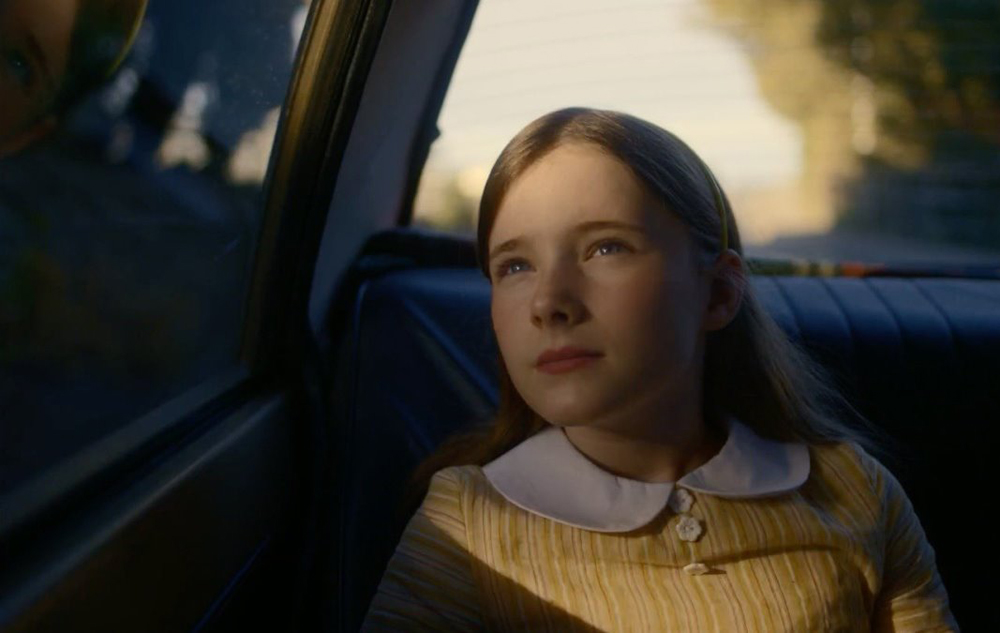When Colm Bairéad and his cinematographer Kate McCullough were looking to get inside the mind of a nine-year-old in “The Quiet Girl,” they recognized a quirk in the technology they could exploit when they started to circle the Sony Venice, the same camera that was deployed to give an epic scope to “Top Gun: Maverick.” It wasn’t as if the two were headed to the skies to capture the horizon, but instead a small Irish farmhouse where the young Cáit (Catherine Clinch) is spending the summer, but when reflecting how the world opens up to her in a way that’s every bit as grand, the filmmakers realized that whereas most who would shoot in the 2.35 widescreen ratio wouldn’t use all of the camera’s sensors, filming in a tighter square frame would activate all of them.
“It’s essentially large-format photography [like IMAX]. It’s a weird paradox in that it’s a narrower frame on a cinema screen, but it has a hugeness to it,” says Bairéad. “Kate and myself used to talk about how Academy ratio is almost closer to human vision than a real widescreen image because we actually have quite a big vertical range as well in terms of human vision, so it all just felt really appropriate for a film that was trying to inhabit this young person’s point of view.”
He adds, “We also liked the idea that once it’s on a cinema screen, it’s not filling the whole screen, so it’ll still present a perspective that isn’t fully formed yet. Her horizons haven’t expanded yet — she understands everything that she’s observing, but the adult world is still slightly out of reach in terms of her understanding.”
Any distance that Cáit experiences as she adjusts to her new surroundings in “A Quiet Girl” only pulls the audience closer to her in Bairéad’s heartrending adaptation of Claire Keegan’s acclaimed novella “Foster.” The coming-of-age drama sees Cáit sent away to the farm of relatives Eibhlín (Carrie Crowley) and Seán Kinsella (Andrew Bennett) when her own parents (Kate Nic Chonaonaigh and Michael Patric) struggle to take care of her amidst an unwieldy brood, though she is hardly a handful herself, usually withdrawn and timid leaving others to wonder what to make of her. Upon arriving at Eibhlín and Seán’s pasture, she would seem to brighten as the sun that peers over the land, becoming familiar with warm water in her baths and the generous offer of a glass of fresh milk before bed. Living far away from the city, the couple would seem to enjoy her company as much as she does theirs and after both have endured a certain level of heartbreak, they come to heal one another.
The ability to make the small, seemingly imperceptible shifts in Cáit’s disposition come across with the tremendous power they clearly have internally is both a credit to Clinch’s beautiful performance and the gentle approach Bairéad has as a filmmaker, guiding a gifted crew who, whether in the meticulous detail to be found in Emma Lowney’s production design or the entrancing rhythm established by editor John Murphy, come together behind the scenes as gracefully as the family that forms on screen does to show the strength derived from leaning on one another. As the film vies for a Best International Feature Oscar as Ireland’s official entry this year after the film became a sensation at Berlinale this past winter, Bairéad spoke about drawing confidence from “The Quiet Girl”’s rich source material while creating such an absorbing cinematic experience with all the ways he could tickle the senses, as well as where his background in documentary filmmaking came in handy and the luck involved in securing locations that it wouldn’t take much to come alive in the film.
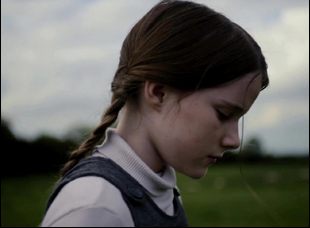
It’s all there. I do feel it’s quite faithful to Claire’s original, because to me it’s a perfect little story, and I just wanted to honor that as much as possible and it was the opposite of what the usual process of adaptation is. Usually you’re trying to whittle it down and distill the original into a manageable form, but with this, it was more of a question of having to expand it ever so slightly so that it would fit the canvas of a feature film. When you read “Foster,” the first few pages, you’re in the car with the girl on the way to the Kinsellas and I felt it was important that the audience should experience her home environment before she gets [there] so that you have an understanding of what the contrasts are between where she’s come from and where she is for that summer.
But even saying that, a lot of the stuff that’s in the opening act of the film is based on small references that are in Claire Keegan’s original. The girl remembers when she’s in the Kinsellas’ house in the source material, overhearing her parents discussing [her] as her mother’s writing the letter to the Kinsellas, so these little things are breadcrumbs that Claire had left in the novella that I was picking up. The other big change obviously is linguistic in that “Foster” is an English-language text, so it was a question of transposing the action of the story to an Irish-speaking community in a way that felt authentic and believable, particularly for an Irish audience, because in Ireland, the Irish language is a minority language. It’s not spoken everywhere, and I like to realistically portray the language, so the setting has to be apt for it to make sense.
As I understand it, this is a real reflection of the culture in Ireland where emotions are withheld. Did that add to why you wanted it to be in the Irish dialect?
Yeah, partly. In a way, the film — and Claire’s original — says a lot about Irish people and our emotional and psychological makeup in a sense, so there was something quite fitting about the notion of presenting that portrait of us as a people, but doing it through our own native language, which even though most people in Ireland don’t speak Irish, still is a part of us. Even the English that we speak has all of these inflections and holdovers from the fact that we all used to speak this entirely different language that over several hundred years was unfortunately phased out of the country, so it always felt quite fitting. Even in Claire Keegan’s dialogue when you read it in “Foster,” there’s so many of those sentences and the syntax and the color of them that as an Irish speaker, I can see how the Irish language has affected that form of English.
But then the Irish language has just been a central part of my life since I was born. My dad raised us through the Irish language. We grew up in Dublin, which is an English-speaking area, but my dad just spoke Irish to us always, and my mom spoke English, so it was a bilingual household, kind of like Cáit’s house in the film. And all of my work so far has been in the Irish language, so when I read “Foster,” I saw an opportunity to make an Irish language film that I felt could be quite universal and that could travel. Thankfully, that’s proven to be the case so far.
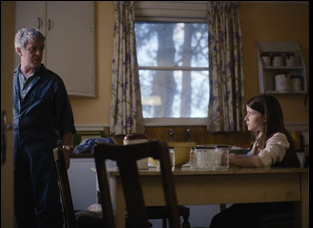
Yeah, I was born in 1981, so a lot of the detail in the film would still would’ve existed when I got to an age that I would be able to absorb it, so it all does all feel fairly familiar to me, though probably more familiar to people who’d be a little bit older than I am. Really, it came from a place of just trying to authentically render this environment. The whole film is built on a philosophy of authenticity and across all departments, just trying to present things as truthfully as possible. With production design, we did a great deal of research and we have our mood boards and figure out a lot of what we’re trying to do, but miraculously, the two main interiors — Cáit’s biological family home and then the Kinsellas’ house that she goes to — even though we had to bring props in and certain things, they’re essentially time capsules.
The first house the farmer who lives there hadn’t updated it in decades, and it had gotten quite run down and it was perfect for Cáit’s biological family, their homestead. Then the Kinsella house, there was another farmer living there on his own and what happened was the last surviving relative above him was that his stepmother, and on her deathbed, she asked him not to modernize the house, so we we’re so grateful to this dead stepmother for saying that. [laughs] Cleona [Ni Chrualaoi], the producer of the film who’s also my wife, found that location, and when we walked in, it felt like we had just walked into the story. It was extraordinary. If you go into that house, that’s what that kitchen, which features so prominently in the film, looks like. It has all of the old tiling and the old Formica table and none of the windows have been modernized, which is usually what you’re trying to shoot around and hide when making a period film. But with this house, it felt like it was meant to be. It was almost as important as the casting because it’s such a character.
Then we were very careful through production design in terms of situating the film in the correct era, but also not trying to make it too nostalgic [because] my sense was always that we’re making a film in the present tense. We just happen to be in a different time period. It’s not that we’re looking back fondly in a way on that particular time. We’re more focused on the characters and their dynamics.
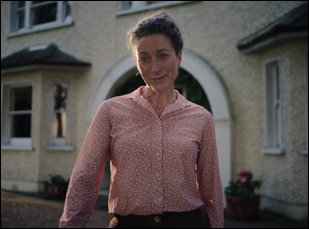
Yeah, I think it does. If you’re making documentaries and you’re following real lives and documenting oftentimes quite emotional material, I guess you have less tolerance for any contrivance after that. You know what feels truthful and that’s then what you’re trying to find in terms of fiction filmmaking. You’re trying to achieve something in a similar space in a way, in terms of the performance. A lot of the documentaries that I would’ve worked on, I became quite interested when I was making documentaries that not only are you capturing people’s lives and unspooling a narrative that relates to these real people, but you’re also trying to capture place and a sense of place. I became quite absorbed in that idea when I’d be filming myself and when I watch “The Quiet Girl,” I can feel that same patient attention to place. That was something that I was certainly honing while I was making documentaries.
Sound is used so evocatively and it’s a very subtle element, but it really plays a role in her empowerment throughout the film. Was that tricky to build?
It was incredibly enjoyable experience. We went into this film knowing that the soundscape was going to be really important because the film is trying to do what “Foster” does, placing you in the shoes of this young girl. It’s not a film that’s trying to seduce you with its intricate plot. It’s really based on the whole question of point of view and believing in the moment-to-moment, remembering what it feels like to be a child and to be in an unfamiliar place for the first time, or to meet someone who you’re not sure how you feel about them or what their intentions are, all of these simple things that from an objective point of view as an adult seem mundane, but to a child have a magnified and elevated drama to them.
I always knew that that experiential aspect of the film was going to be really important if it was going to work, and if you go down that road, then all of the soundscape has to be absorbing all of this stuff, so myself and our wonderful sound designer Steve Flanagan spent a great deal of time just figuring out how these spaces should feel in terms of their aural identity. For instance, in Cáit’s family home, even though it’s a farming household, the sounds of the exterior don’t quite penetrate the interior, so when she’s in her own house, you don’t really hear any of the exterior stuff whereas when you get to the Kinsellas’ house, then it’s the opposite, where life floods in — the sounds are always present, so you’re hearing the cuckoo when she’s upstairs because there are trees very close to the bedroom windows and when you’re downstairs, you’re hearing the hens and the cattle. Then Steve had this lovely thing he did for whenever Cáit’s biological father enters a room, he shifted the Atmos ever so slightly — it’s a subconscious audio thing, but it makes the room feel like it has slightly less air in it. These are things that are just incredibly subtle, but that just to me are fascinating in terms of how they aid the storytelling process.
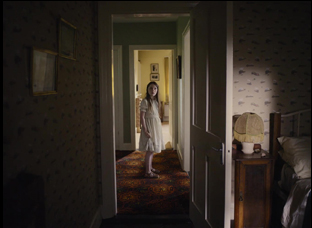
It’s been a whirlwind. We had our world premiere in February at the Berlin Film Festival, and since then it’s just been crazy. We released on the 12th of May in Ireland, and the film is still playing. It’s been going for six months now in cinemas, which is really incredible, and there’s never been an Irish language film that’s enjoyed this kind of success. It’s obviously a very Irish film in many ways, but the fact that we’ve been able to travel the world with the film and see how the film is still speaking to audiences regardless of geography or cultural differences, it just seems to have this universal appeal. That’s been the most gratifying element of traveling with the film. Now we’re just really excited about bringing the film here to the U.S. and so far the response in the U.S. has been really overwhelming. It’s been amazing, so we’re excited to see where it goes from here.
“The Quiet Girl” opens on December 16th in New York at the Angelika Film Center and Los Angeles at the Sunset 5.




